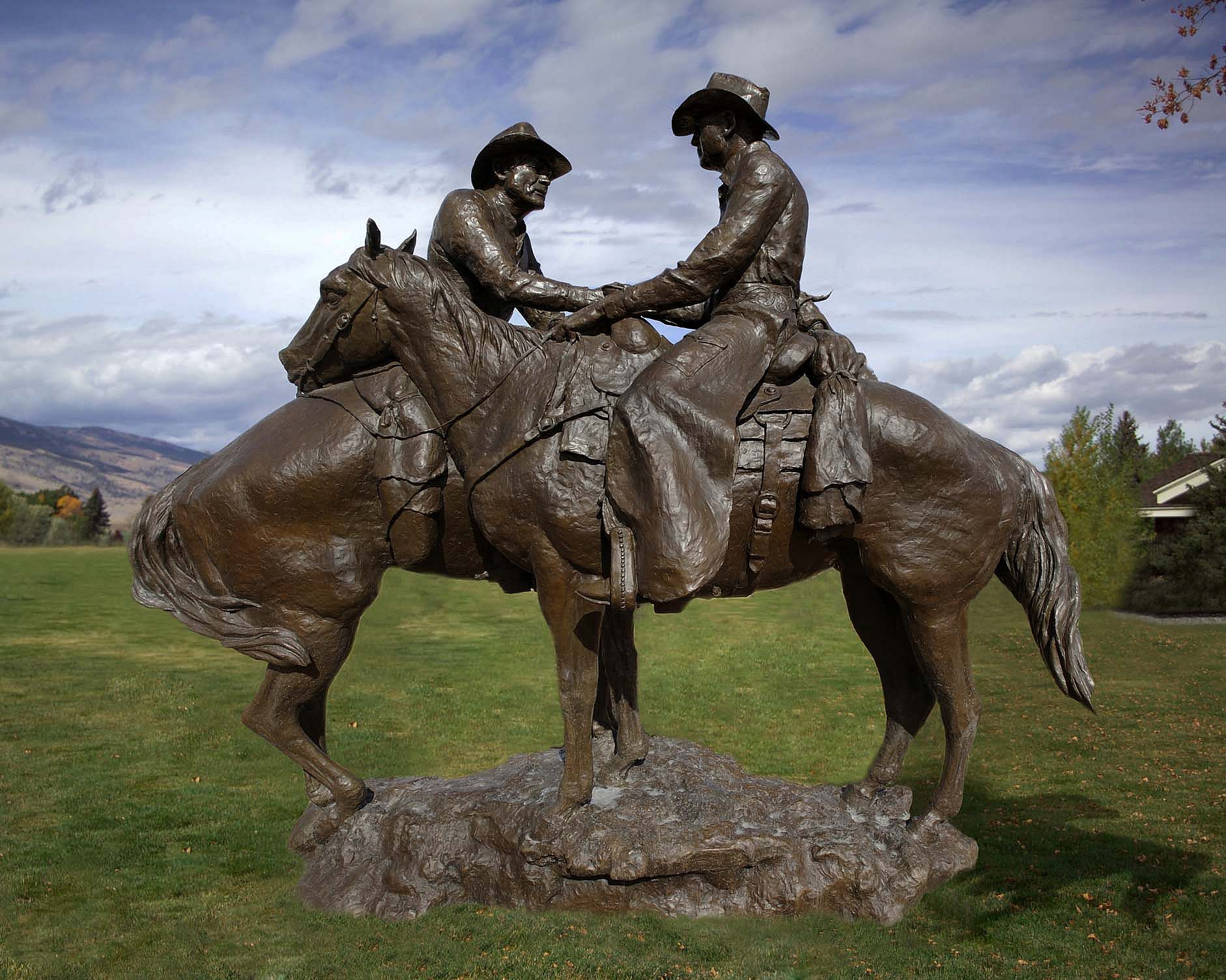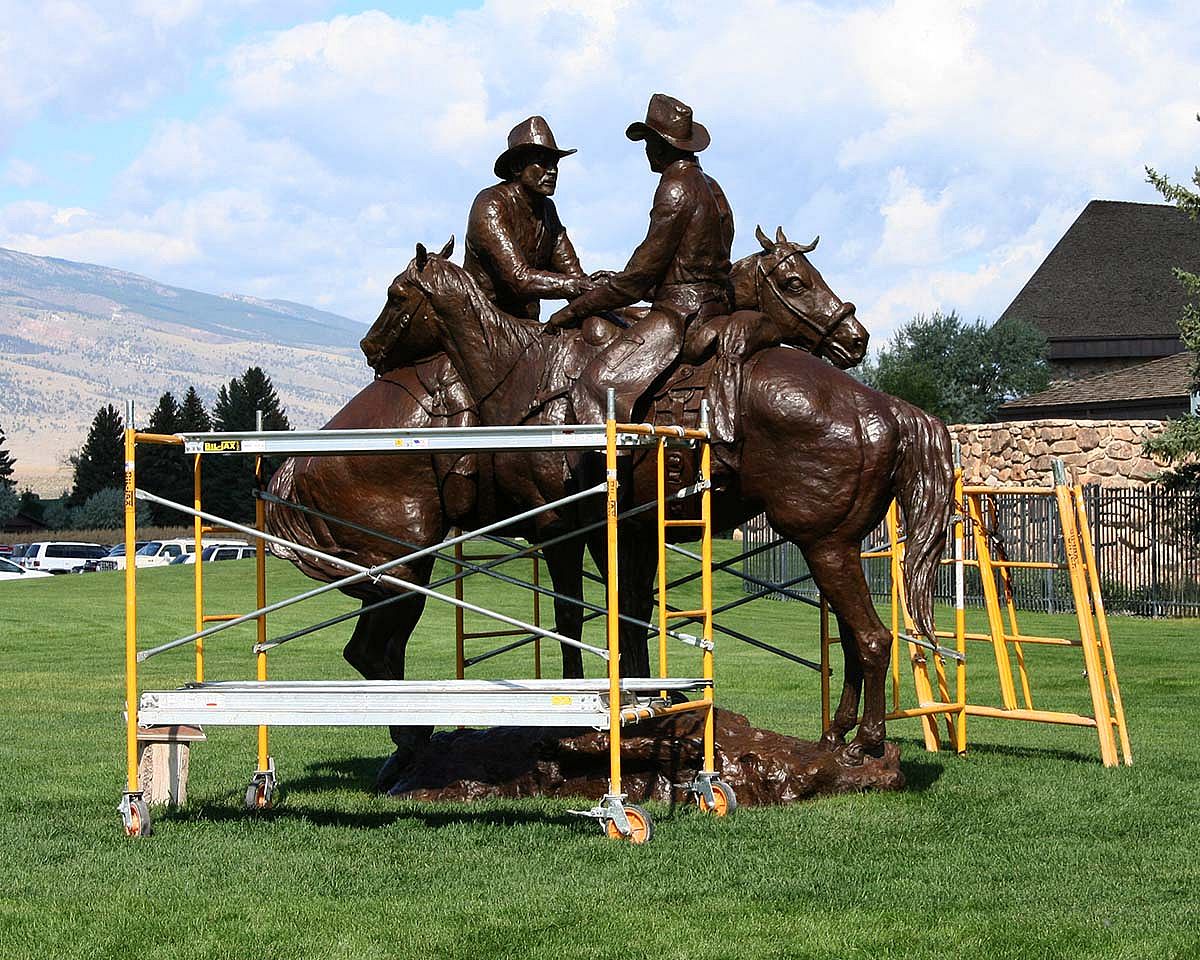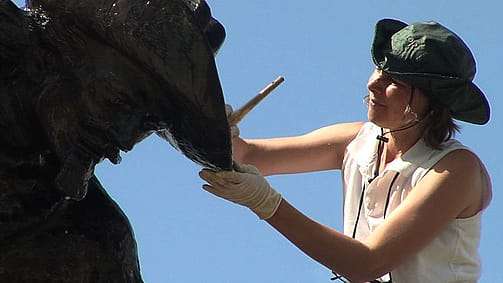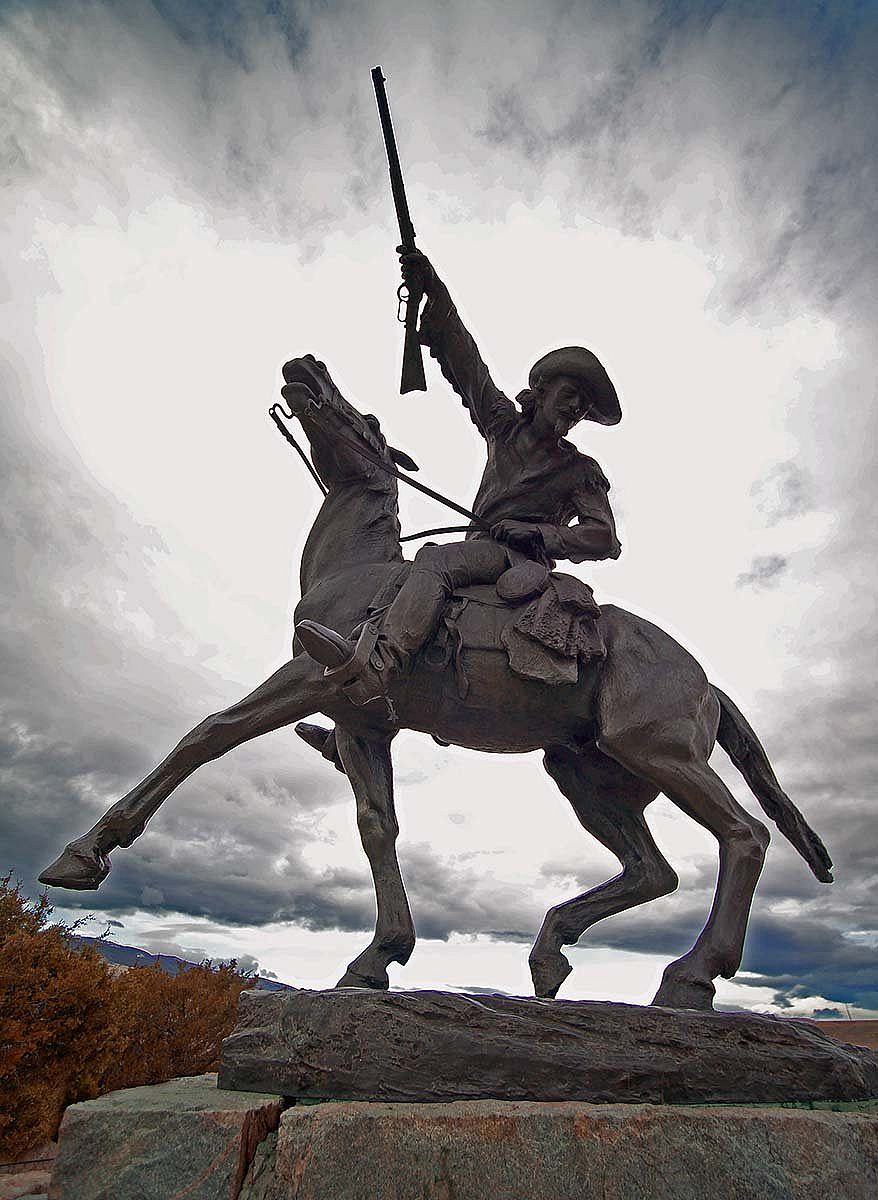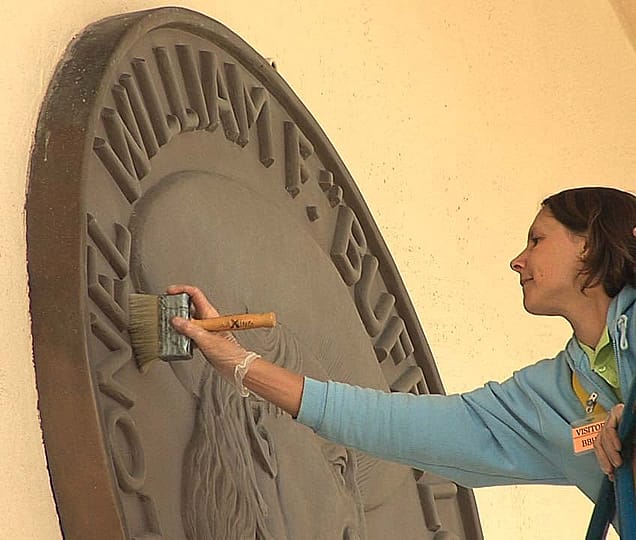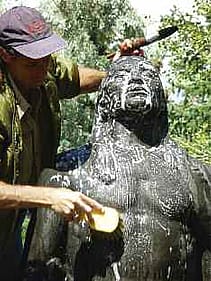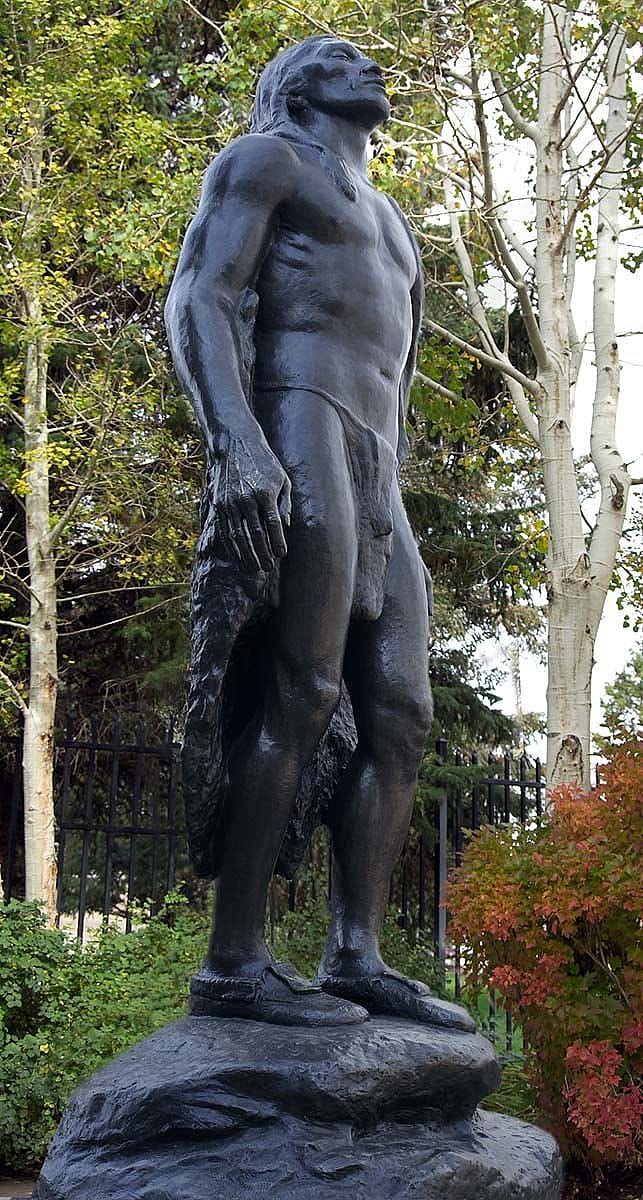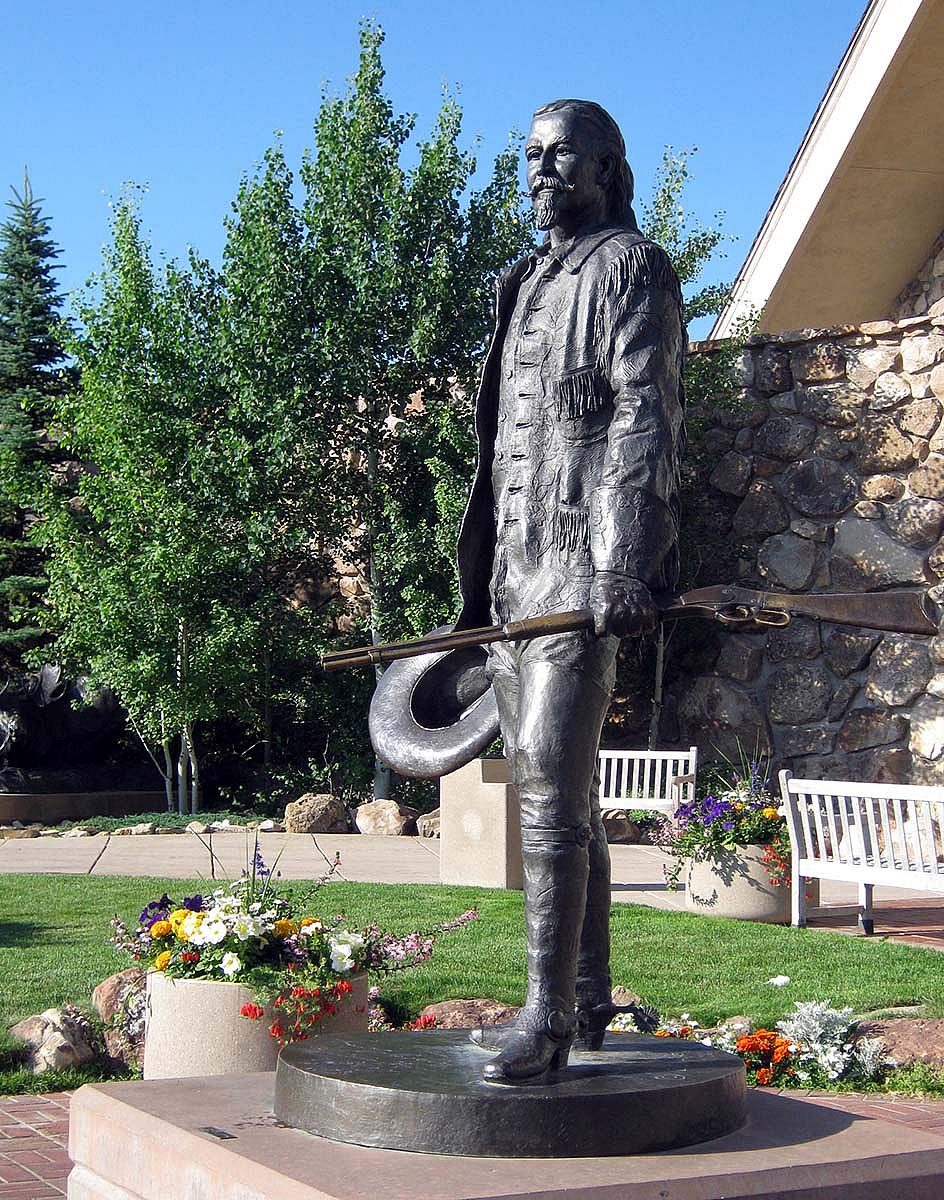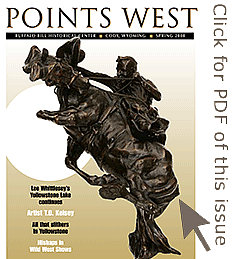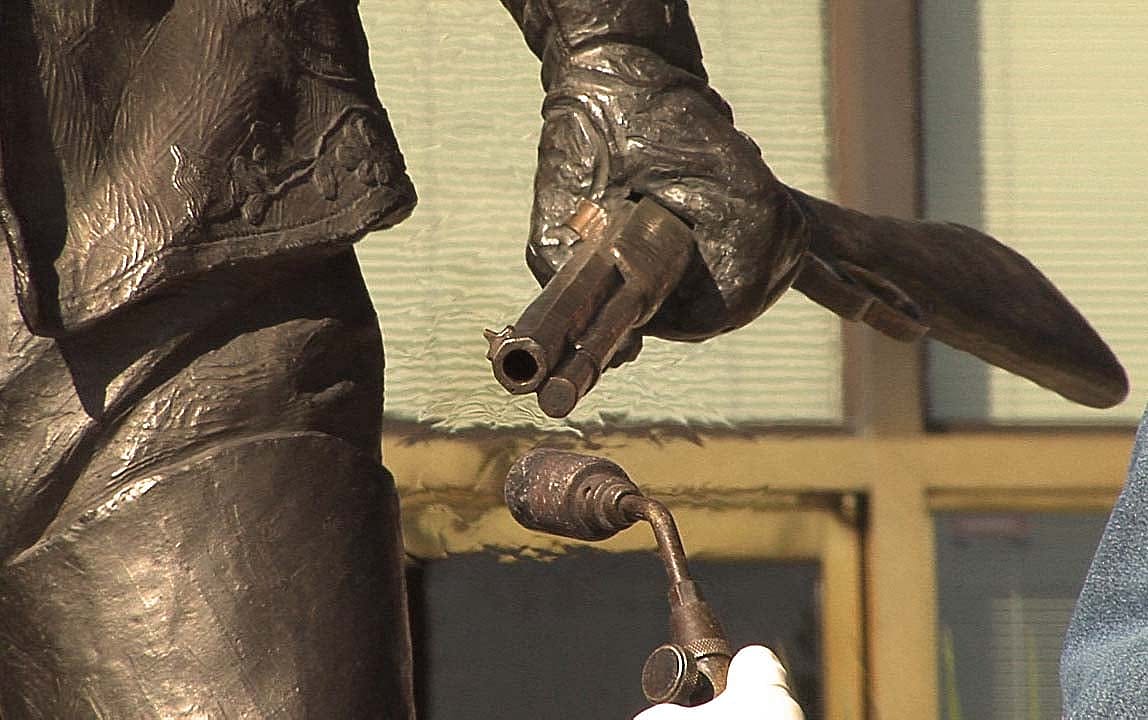
Conserving Outdoor Sculptures – Points West Online
Originally published in Points West magazine
Spring 2008
Ensuring a Lasting Finish for the Future: Conserving Outdoor Sculptures
By Mindy A. Besaw
Thanks to a grant from the Henry Luce Foundation, ten sculptures in the Center’s collection were conserved in August 2007. Three crew members from Russell-Marti Conservation Services, Inc. (California, Missouri) spent three weeks carefully removing corrosion, cleaning, and reapplying wax to the sculptures.
Sculpture: Herb Mignery (b. 1937). Code of the West, 1998. Bronze, 140 x 137 x 72 inches. Gift of Mike Kammerer / Cody of the West Foundation. 9.01
In the “before” picture above left, the warm brown patina of Code of the West had a dull grey haze-like appearance, caused by mineral deposits and a blanched wax coating. It took several days of continuous work to remove mineral deposits and corrosion with fine brass wire bristle brushes. After washing, two applications of paste wax were applied and lightly buffed. As seen in the image at right, the conservators drastically improved the surface of this sculpture.
Sculpture: Gertrude Vanderbilt Whitney (1875–1942). Buffalo Bill—The Scout, 1924. Cast by Roman Bronze Works, N.Y. Bronze, 149 inches. Gift of the artist. 3.58
Annual maintenance treatments on The scout are necessary to preserve the iconic sculpture for many generations to come. Prior to treatment, the surface of the sculpture was an uneven combination of raw vulnerable metal, thickly applied wax, powdery residue, unstable patina, and corrosion. Marianne Marti (pictured) and her team carefully removed corrosion and residue with fine brass wire bristly brushes, washed the sculpture, and applied two coats of wax. Cleaning and waxing helped unify the surface and protect the sculpture from frequent handling by visitors.
Wyoming’s harsh climate creates unusual discoloration, crystals, and wearing away of surfaces on the sculptures, as these close-up images attest. The conservation process kick-started a new rotating annual maintenance schedule for the outdoor sculpture collection.
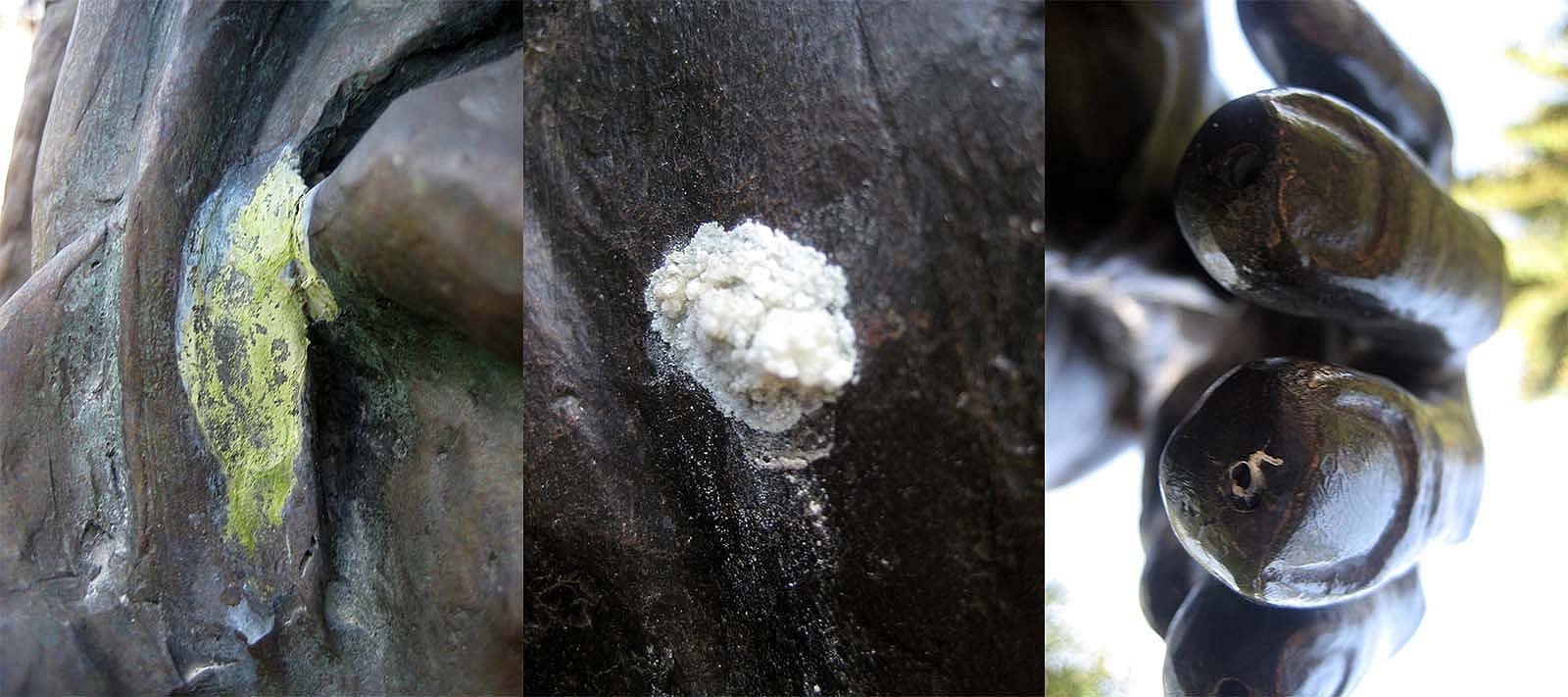
The conservation crew rented a boom lift to get a closer look at the bronze medallion above the front entrance to the Center. They discovered a thin application of matte brown paint covering the surface of the bronze. Future treatments will remove the brown paint to reveal the bronze beneath and help make the details of the medallion more easily read from the ground below. [Ed. note: The medallion has since been removed and placed in storage with a redesign of the front façade.]
Sculpture: James Earle Fraser (1876–1953). Buffalo Prayer, modeled ca. 1917, copyrighted 1931, cast posthumously 1968. Cast 1/2 by Modern Art Foundry, New York, N.Y. Bronze, 107.5 inches. Gift of William E. Weiss. 51.72
Once corrosion and mineral deposits were removed with wooden skewers, brass wire brushes, and bronze wool, the Buffalo Prayer was thoroughly washed with water and a mild cleaner as Andrew Breidenbach demonstrates.
The extremes of Wyoming weather play havoc with outdoor sculptures. Regularly conservation maintenance of outdoor sculptures is necessary for long-term preservation. Buffalo Prayer, last conserved in the 1990s, gained an elegant new surface.
Sculpture: Bob Scriver (1914–1999). Buffalo Bill—Plainsman, 1976. Cast by Modern Art Foundry, N.Y. Bronze, 86.5 x 62 x 50.25 inches. 12.77
At the entrance to the Center, many visitors pause to have their photographs taken with Buffalo Bill.
The constant handling of the sculpture had worn the bronze base, rifle, and edges of the sculpture’s hat to a shiny metal. The coloration was reapplied to the shiny bronze by successively heating the metal with a torch and then applying thin layers of patina.
About the author
Mindy A. Besaw began her tenure as the John S. Bugas Curator of the then-named Whitney Gallery of Western Art in January 2007. With a background in contemporary art as well as art of the West, Besaw’s special interest is to connect contemporary western art with its historical counterpart. She previously served as Curatorial Associate at the Institute of Western American Art in the Denver Art Museum. While in Colorado, she was also an adjunct instructor in art history at the University of Colorado–Denver. She earned her bachelor-of-fine arts degree at the University of Illinois, Champaign–Urbana, and her master’s degree in art history at the University of Denver. After overseeing the reinstallation of the Whitney gallery, Besaw pursued her doctorate degree, after which she returned to the Whitney. In 2015, she was appointed curator the Crystal Bridges Museum of American Art in Bentonville, Arkansas.
Post 264
Written By
Nancy McClure
Nancy now does Grants & Foundations Relations for the Center of the West's Development Department, but was formerly the Content Producer for the Center's Public Relations Department, where her work included writing and updating website content, publicizing events, copy editing, working with images, and producing the e-newsletter Western Wire. Her current job is seeking and applying for funding from government grants and private foundations. In her spare time, Nancy enjoys photography, reading, flower gardening, and playing the flute.
